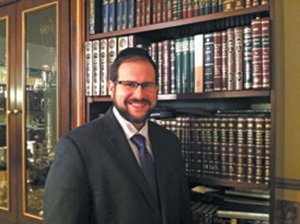
For years, the Tappan Zee Bridge connected Rockland and Westchester Counties. It was a very impressive structure, with much of the bridge being more like a highway just above the water. Towards the Westchester side, the bridge sloped upwards to become a suspension bridge, so that boats could travel freely beneath it.
It was determined that after decades of use, the bridge was beginning to fall apart. A new bridge was constructed and completed a few months ago. It was renamed the Mario Cuomo bridge, in memory of the late former governor of New York.
The question then became what to do with the old vacant bridge. The original plan was to dismantle it with hydraulic cranes, and cart it away piece by piece with a barge. But engineers soon determined that the bridge was too unstable and feared it could be dangerous to leave standing for the time it would take to slowly dismantle it.
The new plan was to dynamite the main structure and collapse it into the Hudson River. It was decided that it was best to do so during the winter when it would have the least effect on the marine life in the river.
The detonation was originally scheduled for a weekend but had to be postponed because of high winds.
On January 15, 2019, at 10:52 a.m. the explosives placed on the old bridge were detonated, and the east anchor span of the bridge dropped into the Hudson River in a cloud of smoke. Hundreds of spectators on both sides of the river witnessed the event.
It is fascinating to think that what had been the road to cross the Hudson River for so many years is no longer. If one tried to drive along the same route that had been driven for so many years, he would find himself in the Hudson River. The new bridge was built close to the old one, but it required an entirely new structure with updated technology for its construction.
In life, we are constantly seeking out the proper path to follow. But this world is somewhat fluid and unstable, with new challenges and vicissitudes arising constantly. What was the road to greatness yesterday—spiritually, economically, technologically, in parenting, educationally, etc.—yesterday, perhaps for many decades, may no longer be the proper course to follow today. That old road may have fallen into disrepair requiring a fresh new path, sometimes over uncharted waters, in order to forge ahead.
When Devorah the Prophetess uttered her magnanimous song after the miraculous defeat of Sisra and his armies, she described how when the enemy invaded, the roads became deserted because they were dangerous for travel. When the enemy was vanquished, the roads were reopened and the nation was once again able to travel freely (See Shoftim 5:6-7).
It is reminiscent of what occurred in 1967, when the road leading to Yerushalayim was reopened to Jews, after having been blocked off for 19 years, with the fall of the old city to the Jordanians during the War of Independence.
Sometimes we need to rediscover old roads by seeing what worked in the past that may again be the key to success. At other times, we need to be courageous enough to admit that the old road is no longer suitable for travel, and a new road must be constructed. Einstein once quipped that insanity is doing the same thing over and over again yet expecting different results.
Ultimately, the Torah is the path of truth—unalterable and indomitable. Our struggle is to figure out how to ensure that our path in this world is always in confluence with Torah.
Happy and safe travels.
By Rabbi Dani Staum, LMSW
Rabbi Dani Staum LMSW is a rebbe and guidance counselor at Heichal HaTorah in Teaneck, New Jersey, principal at Mesivta Ohr Naftoli of New Windsor, and a division head at Camp Dora Golding. He can be reached atstamtorah@gmail.com. Looking for instant inspiration on the parsha in under five minutes? Follow him on Torahanytime.com.









